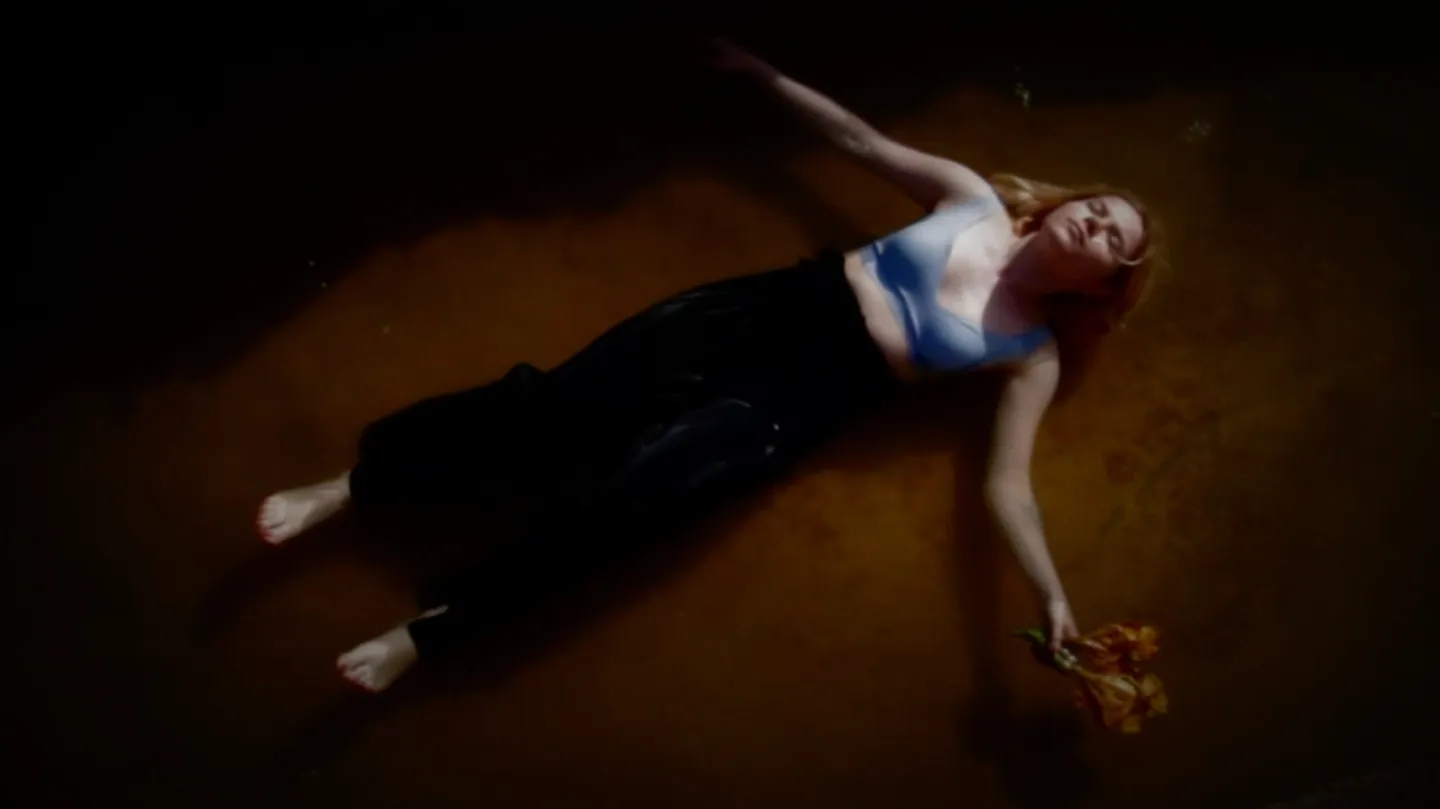
Ophelia
About artwork
Provenance
Tech info
About
Agata Lankamer's video is a visual and auditory fairy tale about a girl - little Ophelia. On July 15, 1999, a bat invaded her body. Because of this, her flower never bloomed, she stopped growing and aging. Time stood still. Petrified, she waits for the poisonous nectar to flow out. Her vegetation is in slow motion and memory exercise. She tries to reconcile her own innocence with the blemish, to cleanse herself of disgust. She finally wants to undergo a rite of passage, heal herself, and break free from the stagnation of her own physicality. "Ophelia" is an attempt to work through the artist's experiences related to pedophilia and an analysis of the relationship of memory to trauma. The fluidity of the boundary between fiction (imagination, child's fantasy) and reality (memory) prevents movement (and thus the undertaking of real therapy). This condition symbolizes Shakespeare's Ophelia, depicted as in Millais': drowning, stopped in a dramatic moment, resigned and yet expectant. Ophelia is also madness or Victorian hysteria, thus a fictitious pathological entity repressing women's sexual and social freedom to the margins of society. Similarly excluding is asexuality, which is the result of untreated trauma. The childish appearance of the heroine - already an adult woman - sounds even more ironic here. The bat, through reference to many similar tropes in world cultures, is for Lankamer a synonym for a predator. Allegedly, in Mexico, the devil was imagined as a bat-man with an erection. We owe to the fears of the oppressive Victorian era norms the questioning, shape-shifting figure of the vampire-bat. Ophelia portrayed by Lankamer holds a poisonous flower with a stunning scent, pollinated by bats. The association with sexual penetration suggests itself. The flower and the bat remain in constant toxic tension, resembling a narcotic trance. Mutually conditioning each other - suspended in time.
























